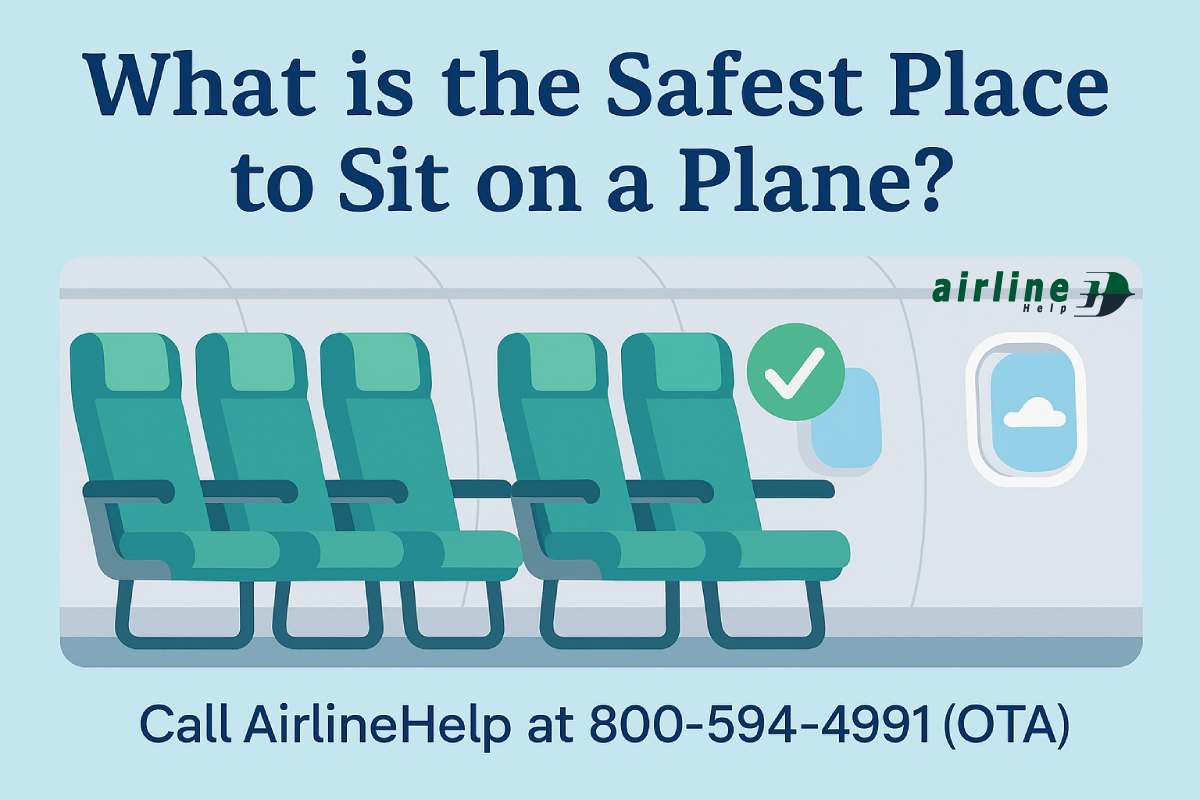
Flying is one of the safest ways to travel. But it’s natural to wonder—where is the safest seat in a plane? If you’ve ever caught yourself choosing your seat while thinking about safety, you’re not alone. Let’s break it down simply, based on facts and real-world data, so you can feel more confident the next time you board a flight.
Is There Really a Safest Seat in a Plane?
Yes, according to several studies and reports, certain seats have had better survival rates during past crashes. But before we dive into the safest place to sit in an airplane, it’s important to note that accidents are rare. Planes are built with strong safety standards, and airline crews are trained to handle emergencies. That said, a few patterns have emerged when looking at older accident data.
Rear of the Plane: Often Reported as Safer
Multiple studies, including a major one by Popular Mechanics, have shown that passengers seated at the back of the plane tend to have higher survival rates in crashes.
- In the study, passengers sitting behind the wings had a 69% survival rate, compared to 56% for those over the wing, and 49% for those in the front.
- A 2015 TIME analysis of 35 years of aircraft accidents also supported this idea. The back third of the plane had the lowest fatality rate.
Why is the back safer?
The front of the aircraft often takes the brunt of the impact. In rare situations like a crash landing or nose-first impact, the rear may be less affected.
✈️ Travel Tip: If you’re concerned about safety, book a seat toward the back of the plane—especially aisle or window seats behind the wings.
Aisle or Window—Does It Matter?
When it comes to safety, your row matters more than the seat position. That said, aisle seats can sometimes allow faster exits in an emergency evacuation.
If you’re sitting in an exit row or near the back on the aisle, you may be able to leave the aircraft faster, which is crucial when seconds count.
Over the Wing: A Balanced Option
Some travelers feel safest sitting over the wings. Why? This area is considered more stable and has less turbulence because it’s near the center of gravity.
While the safest seats in a plane by survival statistics are in the rear, over-wing seats are:
- Structurally strong
- Usually close to emergency exits
- Located near the aircraft’s support structure
🧳 Quick Tip: If you prefer less motion and better stability during the flight, book a seat over the wing.
Front of the Plane: Most Comfortable, But Not the Safest
First class or business seats in the front come with luxury—but not necessarily safety. In many studies, passengers in the front section had lower survival rates in severe accidents. The front tends to be impacted first in runway overshoots or nose-first landings.
Still, if comfort and quick deplaning matter more to you, front-row seats might suit your needs.
Exit Rows: Best for Fast Evacuation
While exit rows offer extra legroom, they also provide faster access to emergency exits. During an evacuation, reaching the exit quickly can make a difference.
Remember, passengers in these rows must be physically able and willing to assist in emergencies. Airlines take this seriously, so not everyone can sit here.
🛫 Safety Tip: If you’re comfortable taking responsibility, exit rows offer both space and speed during an emergency.
Middle Seats vs. Aisle and Window
Let’s face it—nobody loves the middle seat. But when it comes to safety, middle seats in the rear of the aircraft may have a slight edge. They’re more protected on both sides and often surrounded by others who can help buffer impact.
Still, most people prefer aisle or window seats for comfort and ease of access.
Real-Life Accidents: What We’ve Learned
Let’s look at a few real crash cases to understand how seat placement mattered:
- United Airlines Flight 232 (1989): Rear passengers survived at higher rates during this crash landing.
- Asiana Airlines Flight 214 (2013): Rear-seat passengers had fewer injuries than those at the front.
- Air France Flight 447 (2009): Survival wasn’t based on seat placement—this was a mid-ocean crash.
👉 Bottom line? While data supports rear seats as safer, every crash is unique. Many factors—angle, speed, fire, rescue response—can impact outcomes.
Other Ways to Improve Your Safety
Aside from choosing the safest seat in a plane, here are ways to protect yourself on every flight:
- Listen to the safety briefing – Yes, even if you fly often!
- Count the number of rows to the nearest exit.
- Keep your seatbelt fastened when seated.
- Follow crew instructions—they’re trained for emergencies.
- Avoid sleeping during takeoff and landing, when accidents are more likely to occur.
📞 Need help booking your next flight or choosing the right seat? Airline Help is here for you! Call us at 800-594-4991 (OTA) for smooth and secure travel planning.
Choosing Safety Without Stress
Don’t let seat selection become a stress point. Planes are incredibly safe, and emergencies are rare. Still, knowing a bit more about seat safety can give you peace of mind and help you make informed choices.
Quick Summary: Safest Seats in a Plane
| Seat Location | Safety Insights |
| Rear of Plane | Higher survival rates in studies |
| Over the Wing | Stable ride, close to exits |
| Exit Rows | Fastest evacuation path |
| Front of Plane | Less safe in most crashes |
| Middle Seat (Rear) | Slight edge in safety, but less comfort |
✈️ Pro Tip: Booking a rear aisle seat gives you a balance of safety, speed, and comfort.
Final Thoughts
So, what’s the safest place to sit on a plane? While statistics point to the rear seats—especially aisle or middle rows—don’t forget that modern aviation is extremely safe overall. Air travel is safer today than it has ever been.
When you’re booking your next flight, use this information to guide your seat choice. If you need help finding the right flight or seat, reach out to Airline Help at 800-594-4991 (OTA). We’re always happy to assist with your travel needs.
Need help with your next airline booking? Airline Help makes it easy! Call 800-594-4991 (OTA) for support with reservations, changes, or seat selection.






